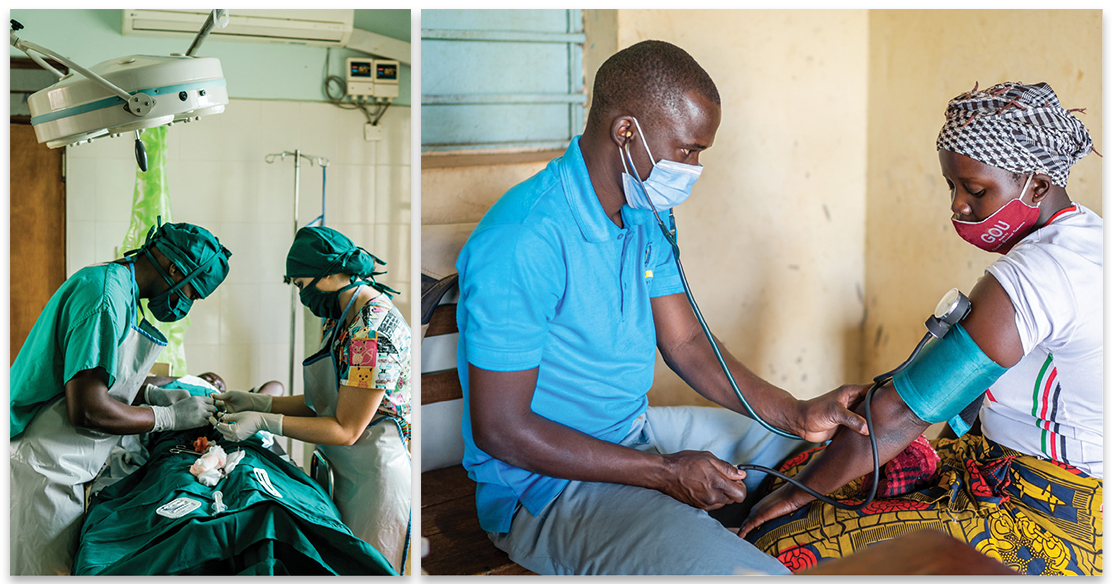The nonprofit has treated more than 700,000 patients and has ambitious growth plans

Young patients get a checkup at OneWorld Health’s community outreach clinic near Tola, Nicaragua.
Friends Matt Alexander and Ed O’Bryan had spent the morning surfing and were refueling at Chick-fil-A on Folly Road in 2008 when their conversation turned to how they could make a positive impact on the world.
Alexander, a nonprofit fundraiser, had grown up with six adopted African siblings and seen the devastation in Liberia following its civil war, while O’Bryan, a student completing his MUSC residency, had served on short-term medical mission trips and yearned to create a long-term difference. During that lunch, they came up with a plan to build sustainable health-care infrastructure in developing countries. Five months later—with the support of a group of locals from St. Andrews Church and MUSC—they were offering medical care in Masindi, Uganda. When they arrived, they found 2,000 people waiting in line. “It ignited a real urgency in us to move beyond just volunteer outreach, and less than 24 months later, we opened our first permanent facility that has now grown into a hospital,” Alexander recalls.
Since then, nonprofit OneWorld Health (OWH), formerly Palmetto Medical Initiative, has served more than 700,000 patients at 22 facilities in Uganda, Honduras, and Nicaragua. “Each number represents a human—a person whose life was changed because of finally having access to health care,” says Alexander.
The World Health Organization reports half the global population lacks access to essential health services. High quality private health care is not attainable to most in developing countries, and public health care is often under-resourced and overwhelmed. That’s where OWH clinics come in.
In Uganda, a girl named Maureen was malnourished and at-risk of death because an untreated cavity had become infected and grew into a fistula—a hole in her cheek—preventing her from moving her jaw or eating. She sought treatment an hour-and-a-half from her home at OWH’s facility, where surgeons repaired the fistula and restored her health.

(Left) OneWorld Health doctors treat a patient at the Masindi Kitara Medical Center in Uganda, the nonprofit’s first permanent facility; (Right) Local staff operated a community outreach clinic in Bweyale, Uganda, treating patients during the COVID-19 pandemic, when American volunteers and doctors could not travel to the country.
Today, the regional hospital that grew out of the original outpatient clinic offers an array of services, including diagnostic and neonatal care. The average cost for a doctor visit, some diagnostic tests, and a prescription is roughly three dollars, about what the poorest Ugandans earn in a day.
OWH builds and supplies its facilities using donated funds from the Lowcountry and beyond. A popular annual golf tournament fundraiser featuring band NEEDTOBREATHE is being reimagined, with an event to be held later this year after being scaled back because of COVID.
Within two years, a OWH facility becomes self-sufficient, providing a sustainable community asset. That model enables the organization to raise money for the next site, fueling expansion in those three countries and beyond.
Partnering with communities to offer services of the most value to the people who live there, these hospitals and clinics employ local staff and purchase local products. In Central America, OWH facilities provide primary and chronic care, the equivalent of urgent care centers here. “We tailor our strategies in each country to the needs of the people we’re serving,” explains Alexander. The organization is planning to build a center in Guatemala and either Kenya or Malawi by 2025.
By 2030, OWH’s goal is to grow exponentially to 50 facilities. “Millions of our brothers and sisters are still dying in the countries we serve from entirely treatable illnesses like pneumonia, diabetes, malaria, and G.I. infections. And, for us, that is simply not okay,” says executive director Michael O’Neal. “We believe we have long-term solutions to these urgent needs, and it’s our responsibility—our purpose and reason for being—to bring those solutions to as many people as we possibly can.”